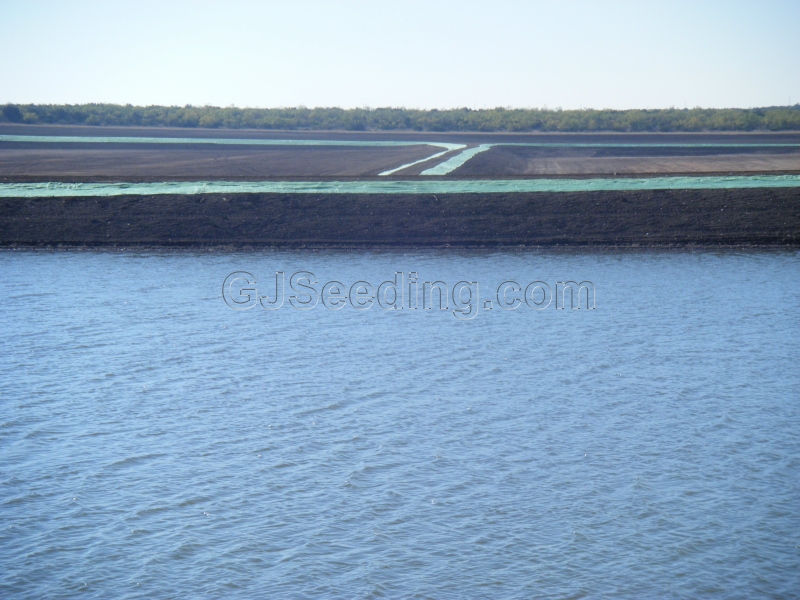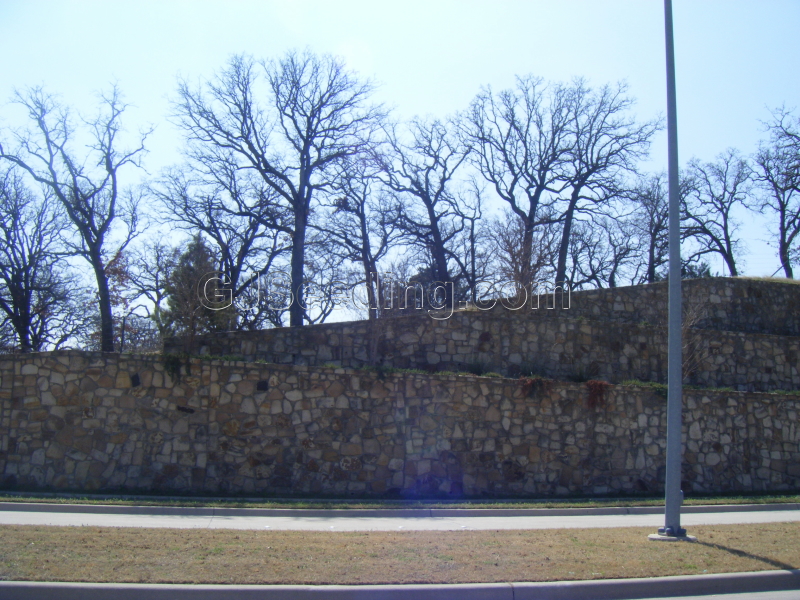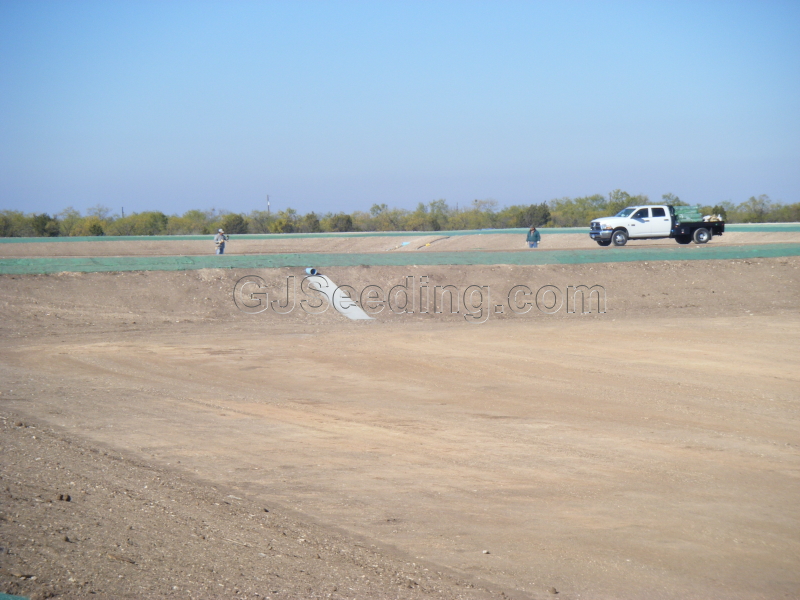What is Hydroseeding…
Hydroseeding (aka: hydraulic mulch seeding, hydro-mulching) is a process which utilizes a slurry of seed, fertilizer, green dye, tacktifier, and mulch. The mixture is transported in a tank and sprayed over the ground in a uniform layer. Helicopters may be used in cases where larger areas must be covered. Hydroseeding is an alternative to the traditional process of broadcasting dry seeds. Hydroseeding promotes quick germination and inhibits soil erosion. The mulch in the hydroseed mixture helps maintain the moisture level of the seed allowing fast germination.
Hydroseeding is used to produce grass on commercial sites, highways, golf courses, pastures, and large lawns. Starting a lawn by hydroseeding is about ½ the cost of sod. Hydroseeding contractors can also spread mixtures of wildflower and tree/shrub seeds or turf grasses for erosion control. The process is called hydro-sprigging when the slurry contains rhizomes instead of seed.
Cost Effective
Hydroseeding is about ½ the cost of sod! Hydroseeding is definitely the most economical choice for establishing the growing results desired without the expense, time consumption, material costs or installation demands of sodding. Hydroseeding typically costs 50% less than the price of sod, and coupled with labor charges, the overall expenses associated with sodding can be very high. With the savings in material costs and installation expenses, a lawn could be fully established for half the price of sod. The savings that can be achieved when comparing the square footage costs are the same savings that are getting passed on to the client’s bottom-line.
Quality
The lawn quality that hydroseeding affords is much healthier, greener and longer lasting than sodding. The root establishment is grown deeper into the soil and avoids the shock of being transplanted into foreign soils, which is what occurs with sod methods. Hydroseeding typically yields superior results the first time it is installed and the seeds are more resistant to external problems because it has been adjusted to its present soil conditions. Hydroseeding soils hold moisture better than sod making the seeds can germinate quicker. Hydroseeding includes fewer weed seeds, no layering of soils, greater possibility of planting trees and shrubs, and incorporates a tackifier coagulant that will not experience wash out.
Coverage
Hydroseeding provides a thicker more uniform lawn that essentially consists of a mat of interlocking fibers creating the ideal growing environment that doesn’t have the threat of seams showing as with sod or sparse, patchy areas with hand seeding. Hydroseeding creates an evenly covered area that forms a barrier to keep seed stabilized and retain moisture while ultimately resulting in a full lush lawn. Other beneficial coverage advantages of hydroseeding are its ability to cover large inaccessible areas such as slopes that are too steep for sod applications. Coupled with increased grass survival and faster germination, hydroseeding is ideal for covering projects ranging from golf courses, retention ponds, and roadside erosion control.
Erosion Control
Erosion control is the biggest reason for using hydroseeding in an effort to hold moisture and protect against erosion from wind, rain, sun and pests through the binding of seed, mulch, tackifiers and other soil conditioners into the hydroseeding slurry to bind with the ground surface soil.
Versatility
Hydroseeding has become increasing popular, overshadowing both hand seeding and sod, for a wide array of jobsites and applications. Some of these uses include large residential lawns, erosion control, pastures, hillside stabilization, vegetation restoration, wildfire repair, roadsides, national parks, soil renovation, landfills, animal feed lots, city parks, ball parks, airports, and many other versatile uses. Hydroseeding is used primarily to establish permanent lawns however it is also known for serving as temporary cover for dirt that will eventually be moved. One of the benefits of hydroseeding is that the seed varieties that are added to hydroseeding mix are as unique and varied as the jobsites themselves. It is accommodating to be able to mix and match different seed blends to satisfy the needs of your job. One of the main separations between hydroseeding and other methods of seeding is its ability to economically seed large areas where alternative seeding methods or sod may not be possible.
Speed
Although hydroseeding doesn’t afford the “instant lawn” gratification, such as sod, the combination of cost, quality, coverage, and erosion control definitely tip the scales in favor of the plentiful benefits of hydroseeding. Hydroseeding is faster and easier to install than sod, and this rapid application is managed without the downfall of outstanding labor expenditures. A properly hydroseeded and watered lawn will start to grow in about 7 days, and under normal conditions, will be fully established and ready to mow in 3-4 weeks. Any Hydroseeded project that is not watered two to three times a week will not have the fast growth.
Watering
With the mulch used in hydroseedings it has the ability to retain up to 10 times its weight in water, providing the best method for fast germination, high plant survival and protection of seeds. No other method of growing grass has the advantages of hydroseeding when it comes to water retention. In the hydroseeding mix fiber mulch and tackifiers are used to anchor the mixture to slopes and seal in moisture. The water is then slowly released, along with nutrients to the root system to constantly replenish itself until the next rainfall. A hydroseeded ground starts growing grass from the root first allowing the root system to go deep into the ground where moisture is at its greatest making a very drought tolerant lawn. When using sod the ground has a difficult time establishing a root system making it weak in drought type conditions the watering demands are twice as much as a hydroseeded lawn.


